In the increasingly crowded Australian spirits marketplace, for a rum maker to stand out means it has to have a unique selling point, some niche aspects of its production that sets it apart in people’s minds from all the other contenders in the marketplace. Killik’s is the one tinkering with the “Jamaican-style” of rum making; Jimmy Rum has its insouciant sense of humour, colourful owner and halcyon location; Beenleigh rests its laurels on being one of the oldest and its origin myth of the shipwrecked pot still; Cabarita Spirits has its vivacious solo proprietress, Brix goes with its yuppie urban vibe, and Bundaberg seems to take a fiendish delight in being equal parts derided and despised the world over. For Husk Distillers though, it’s the focus on producing cane juice based agricole-style rums – this is what they term “cultivated rum” and what they have in fact registered as a trademark with IP Australia.
As was noted in the review of their “Bam Bam” Spiced rum, the company makes a gin called “Ink”, a pair of unaged agricole-style rums at two strengths, a botanical, a spiced, and a few youngish aged rums. In August 2021 they issued “The Lost Blend” virgin-cane aged rum (as opposed to others made with cane having looser morals, one surmises), bringing to mind St Lucia Distillers’ “Forgotten Casks.” Like SLD, Husk had a reason to name this rum “The Lost Blend,” of course: the rum and its name was based on two barrels filled in 2014 and another in 2016 with cane juice distillate run off the 1000-litre hybrid pot-column still – but in the aftermath of the Great Flood in 2017, the hand-written distillation notes that detailed the fermentation histories and distillation cuts for the two 2014 barrels, were destroyed, and so…
These are tragic circumstances for the distillation geek and technical gurus who want the absolute max detail (to say nothing of the distiller who might want to replicate the process). For the casual drinker and interested party, however, there is enough to be going on with: the rums from the two aforementioned years were aged until 2018 in a hot and dry tin shed, before being moved in that year to a cooler barrel warehouse until 2021 when they were slowly married and reduced, to be bottled in August 2021 at 43.5% without any additions, colourings or adulterations – 761 individually numbered bottles form the final release, which is not listed for purchase on the company’s website, because it was offered for sale only to locals at the door, and Husk Rum Club subscribers (as well as on BWS and some local shops).
What’s curious about The Lost Blend is how un-agricole-like it is at all stages of the sipping experience (this is not a criticism, precisely, but it is more than merely an observation). Take for example the nose: it displayed no real herbal grassiness that almost define the cane juice origin style of rum (even the aged ones). It started off with wet cardboard, fresh paint on damp drywall, and some new plastic sheeting. Then it moved on to gingerbread cookies, some plum liqueur, molasses, salt caramel and fudge. A touch of nutty white chocolate, brine, honey and a nice touch of light citrus zest for edge. Nicely warm and quite soft to smell, without any aggro.
If I had to use a single word to describe the palate it might be “spicy” (in multiple ways). And that’s because it was – initial tastes were ginger, cinnamon, anise and vanilla, with a touch of pears, overripe apples, raisins, brown sugar and salted caramel ice cream. There were a few bitter notes of oak and old coffee grounds, but the citrus acidity was long gone here, and overall, even with a short and relatively dry finish that was redolent toffee and unsweetened dark chocolate it presented nicely as a light ‘n’ easy sipper that just wanted to please without going off like a frog in a sock.
Given that the Lost Blend was a rum comprising four- and six-year-old components, it’s almost as surprising to see so much come through the ageing process as what exactly emerged at the other end. I attribute the tastes I discerned to a combination of the subtropical climate and (a guess here) smaller and maybe newer casks that provided those quick and easy notes. What is more baffling is how little evidence there is of the rum actually being from cane juice, because tasted blind (as it was), my scribbled remarks read more like some solid young Latin-style ron than anything else. I did like it more than the spiced Bam Bam, though, and it is well made and works well as a softly tasty warm-weather sundowner: but my advice is to enjoy it for what it is and not to look for serious local terroire or a recognizable agricole-style flavour profile — because that, I’m afraid, just isn’t there.
(#901)(82/100) ⭐⭐⭐½
Other Notes
- As with all the reviewed Australian rums from the 2021 Aussie Advent Calendar, a very special shout out and pat of the Panama to Mr. And Mrs. Rum, who sent me a complete set free of charge. Thanks, as always.
- More notes on the company can be found in the Bam Bam Spiced Rum review.

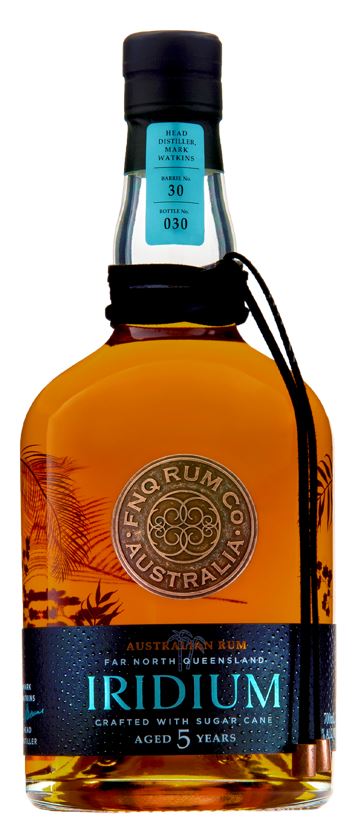

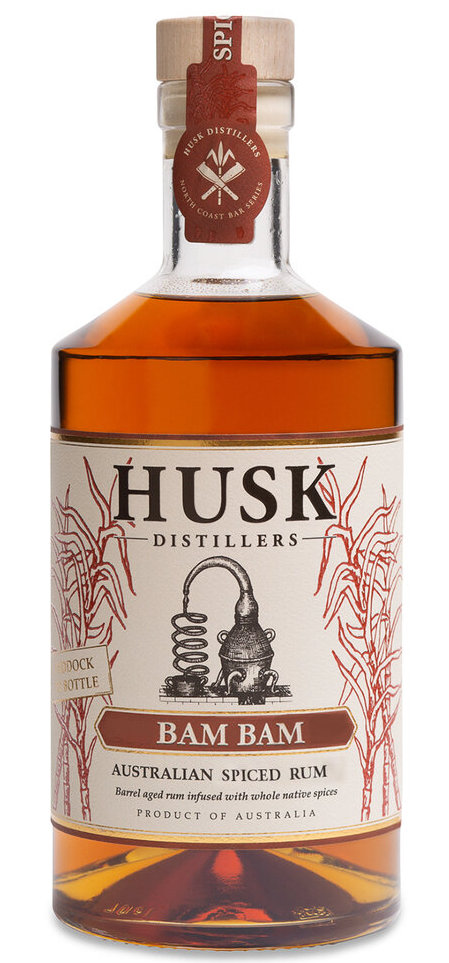
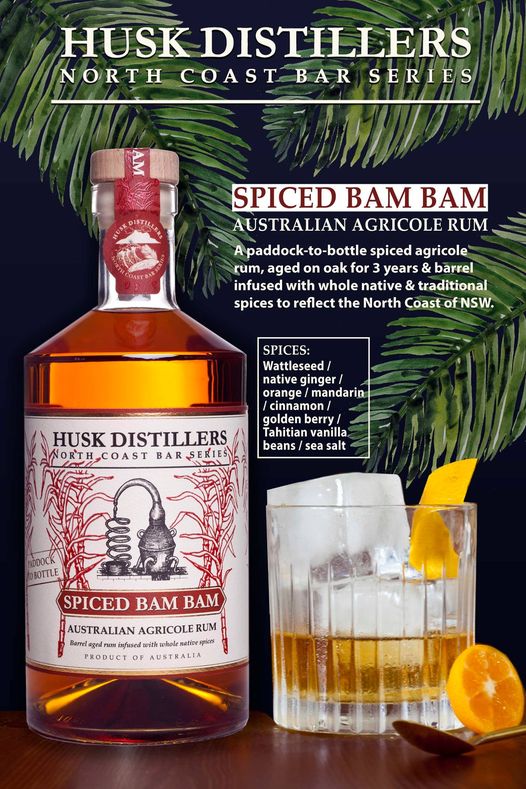
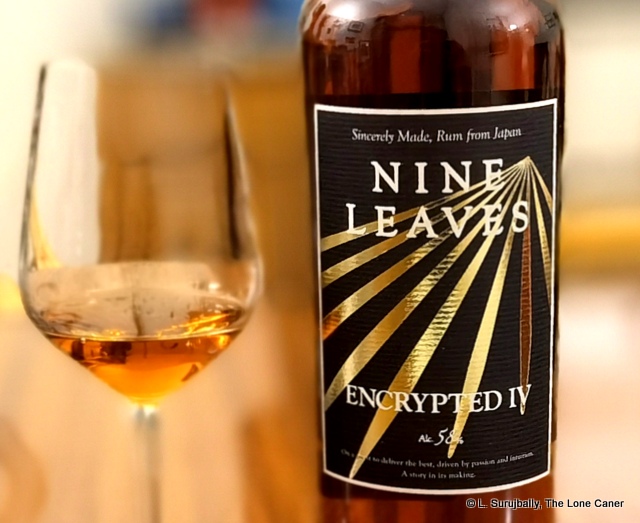

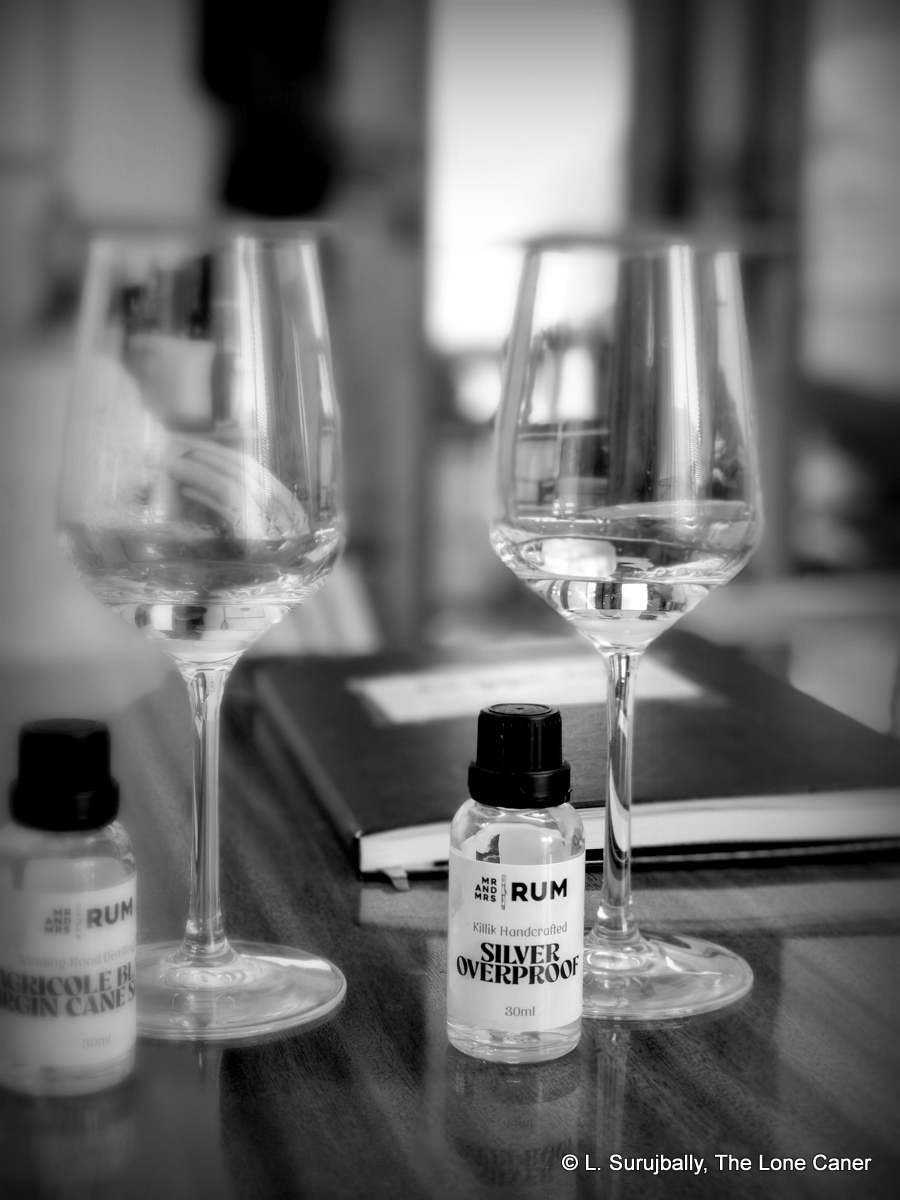
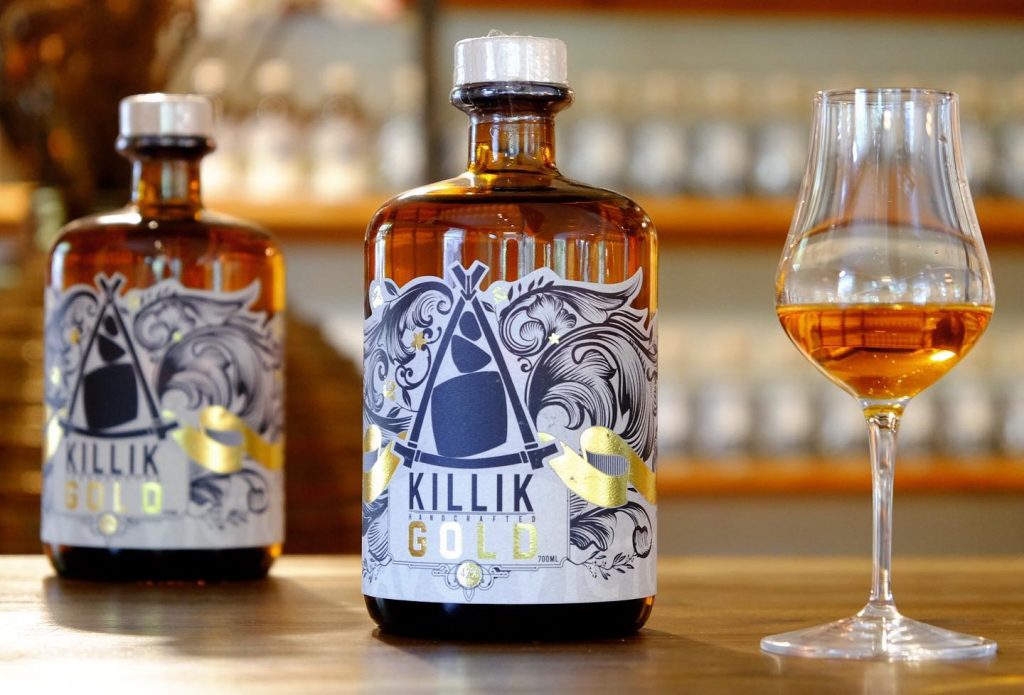
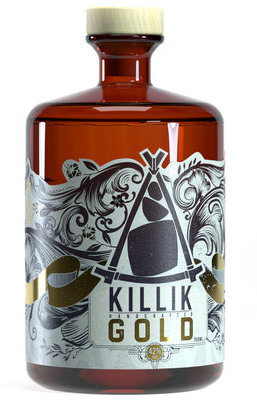
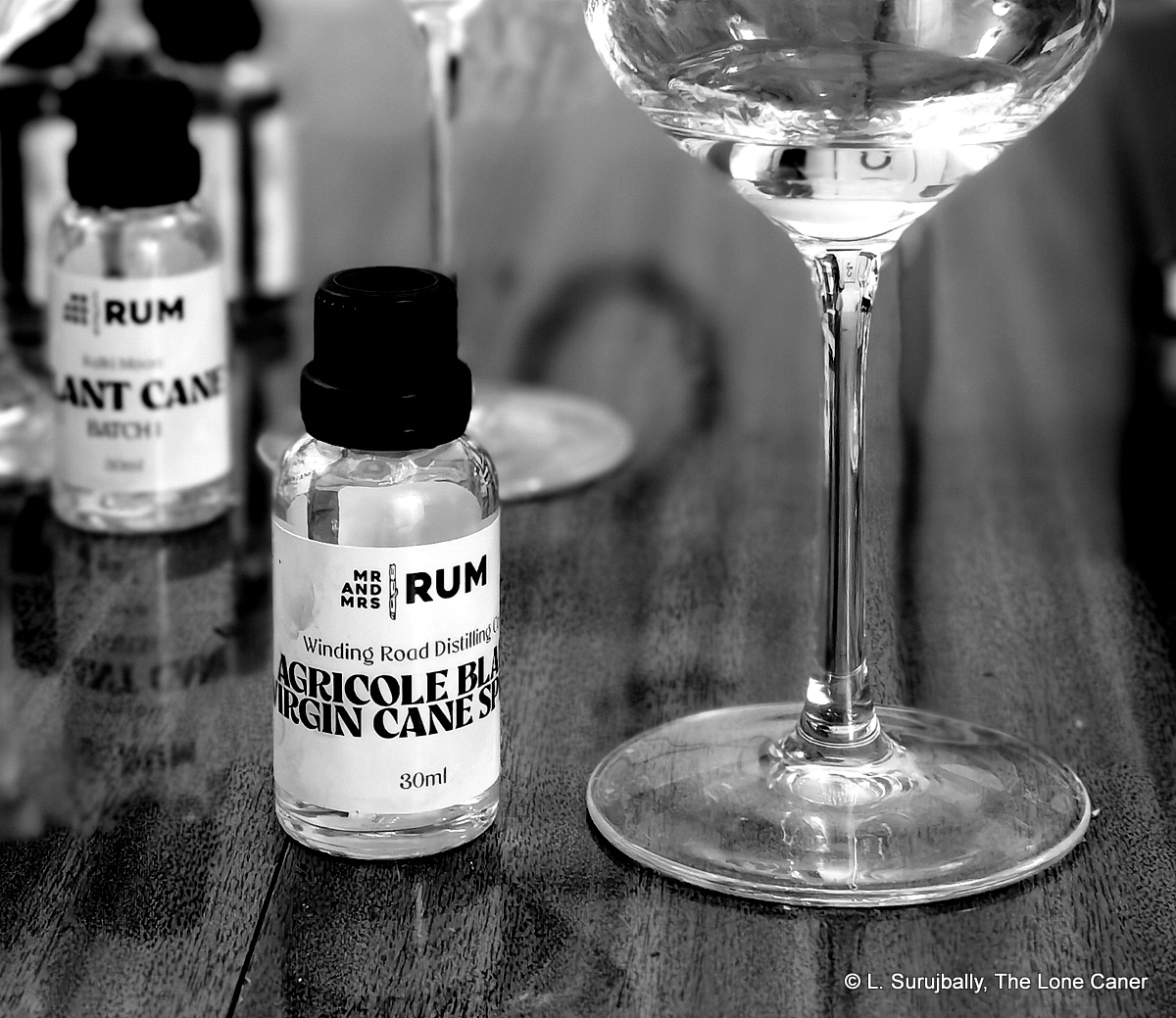
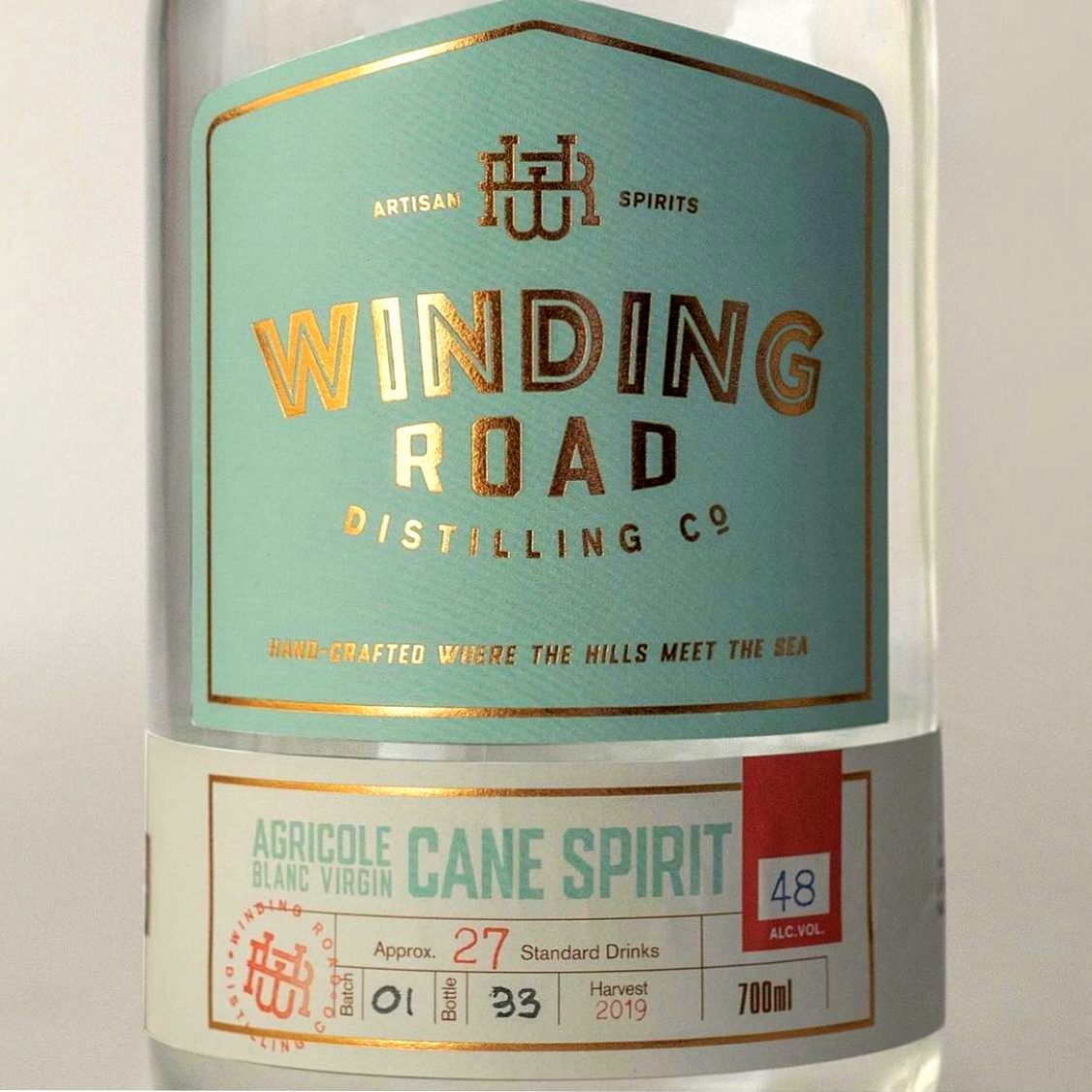
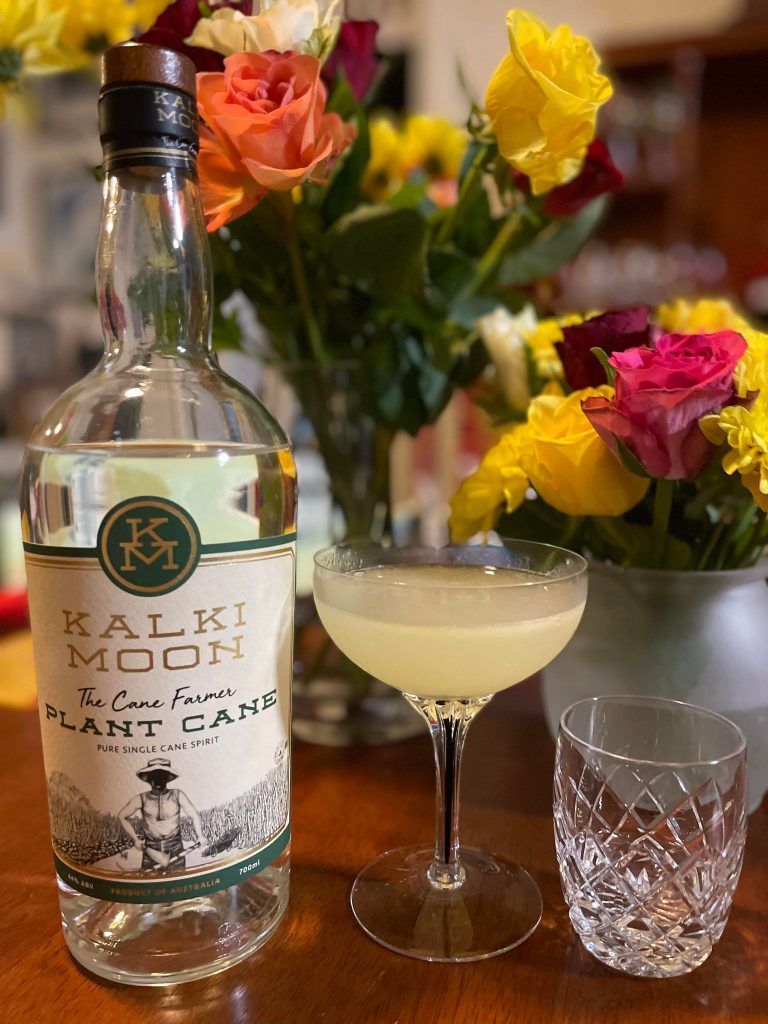

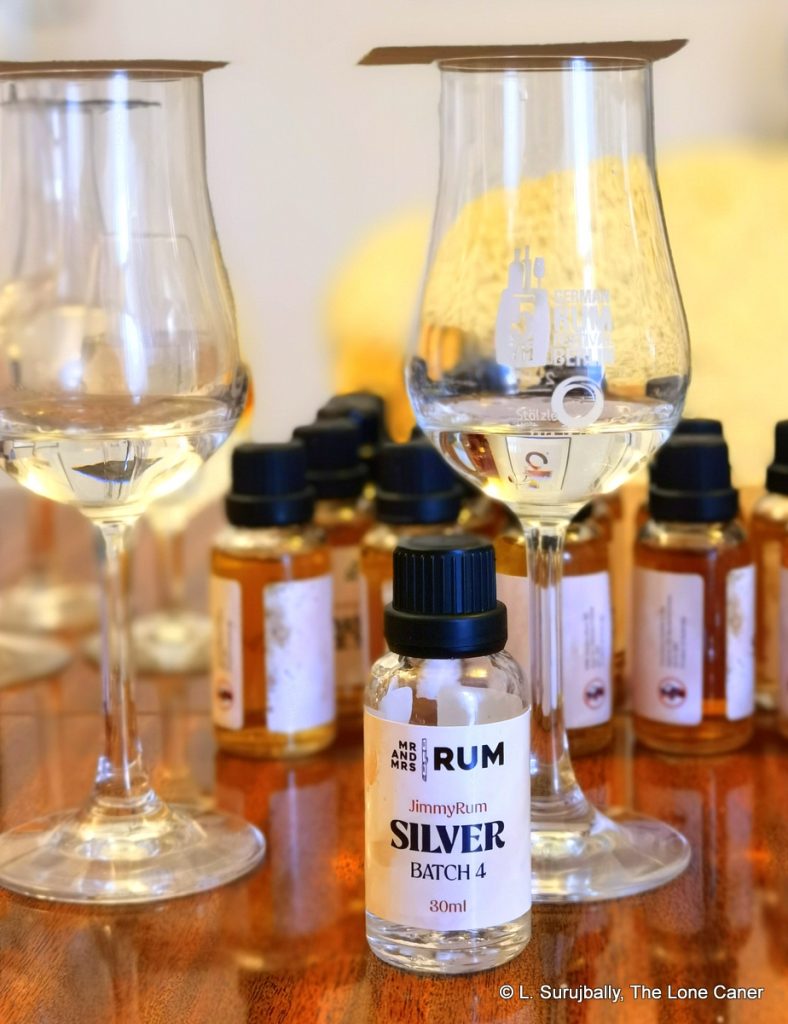
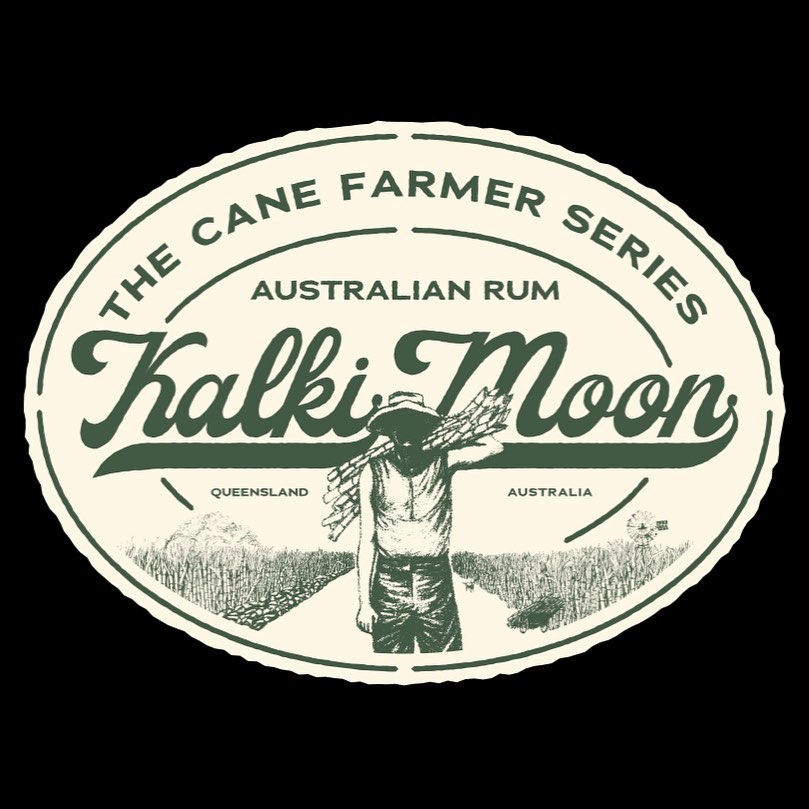
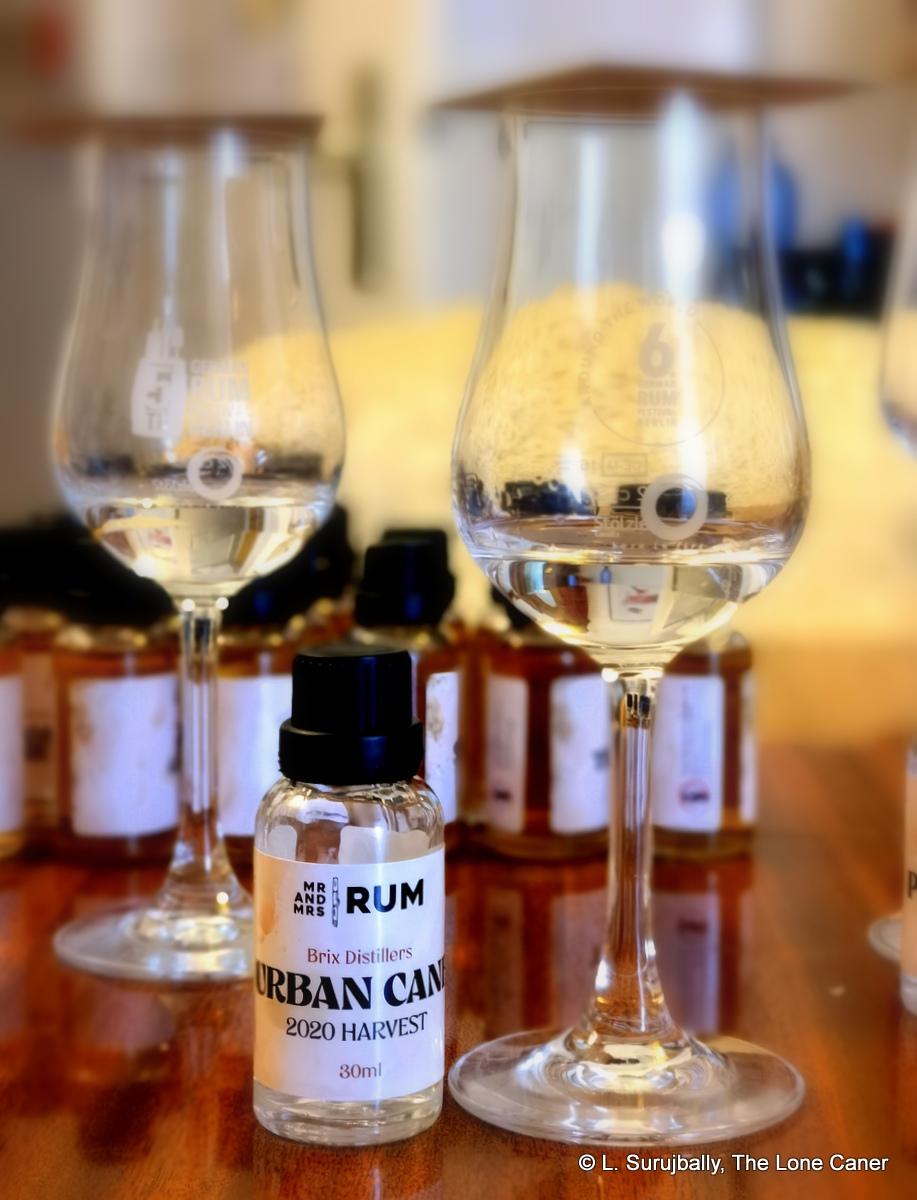
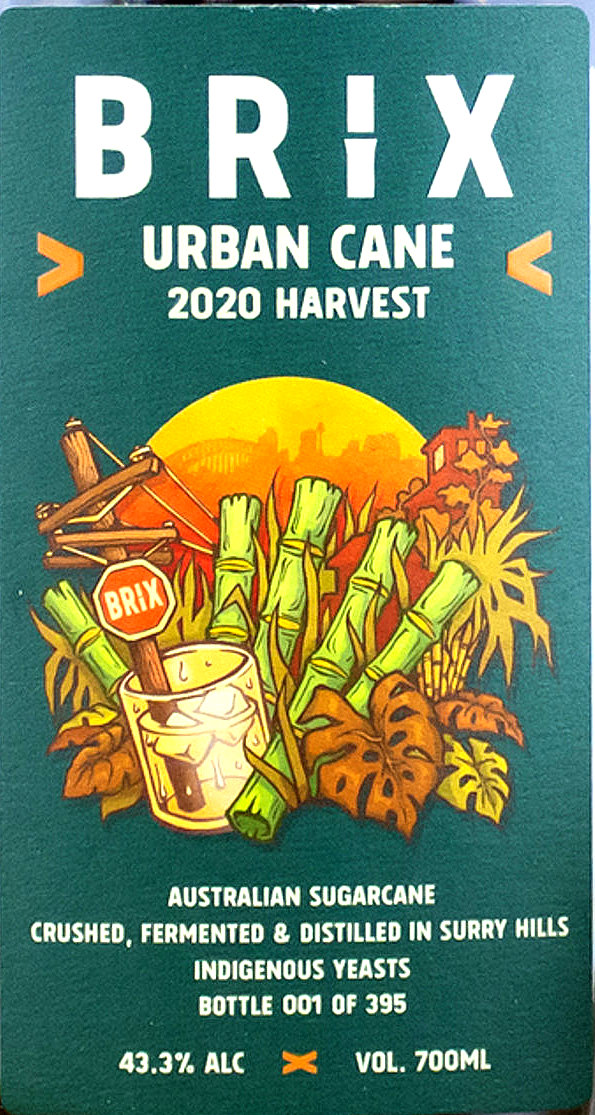
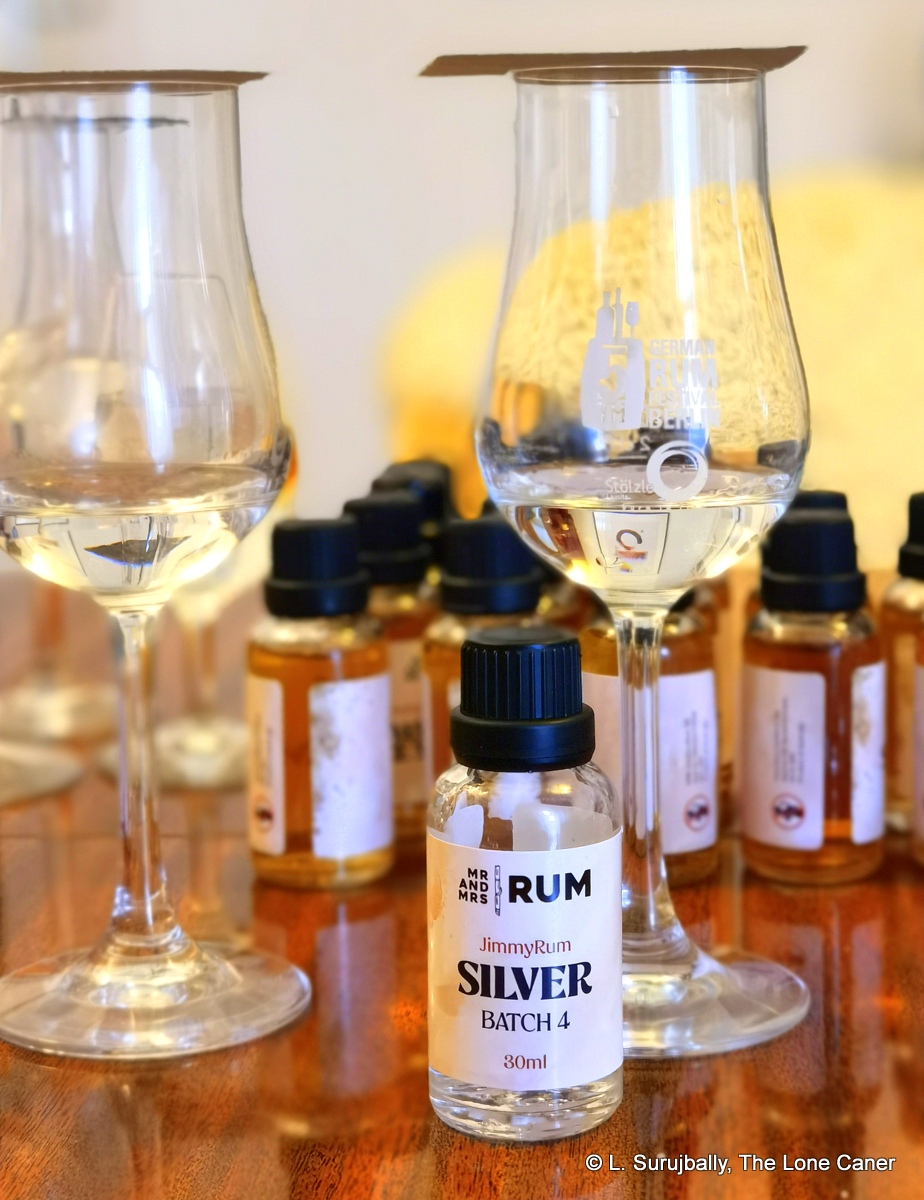
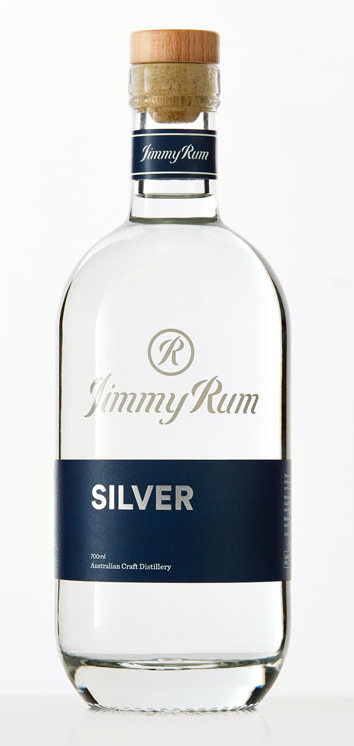
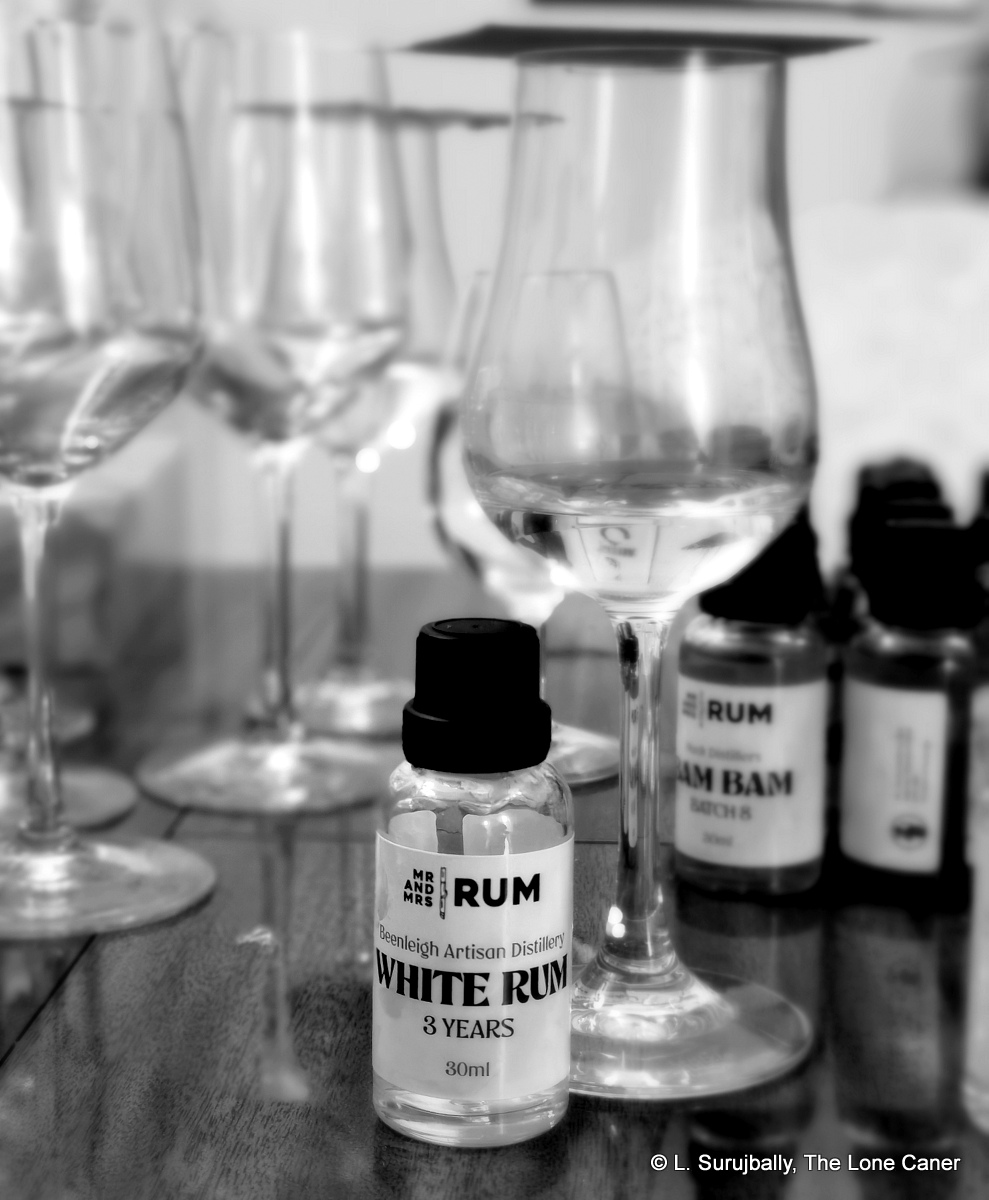

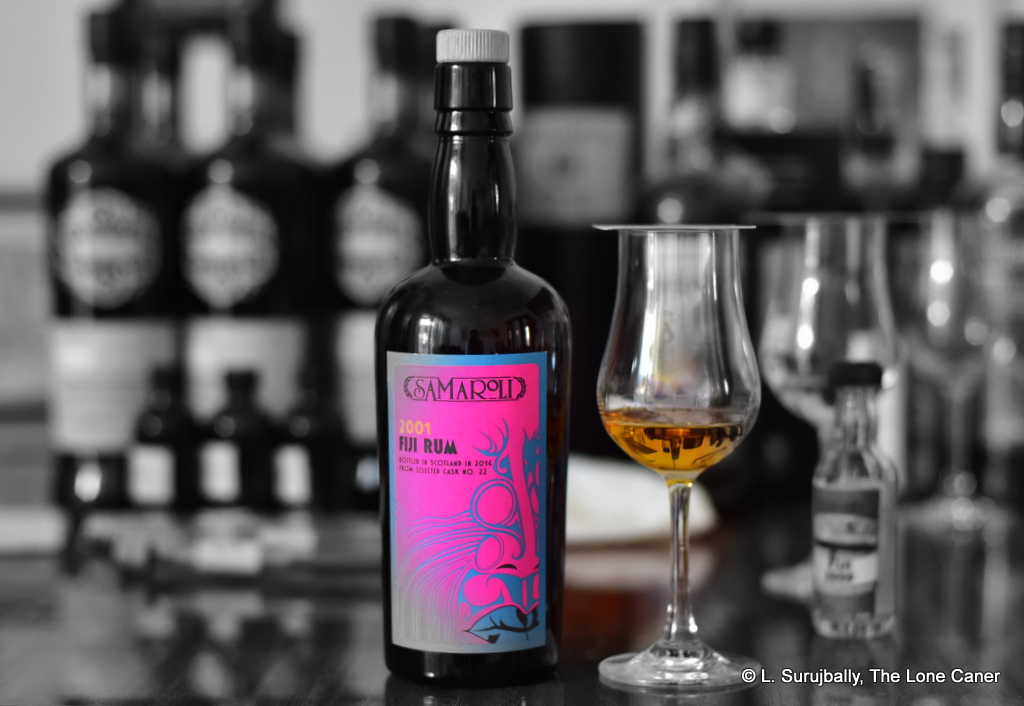
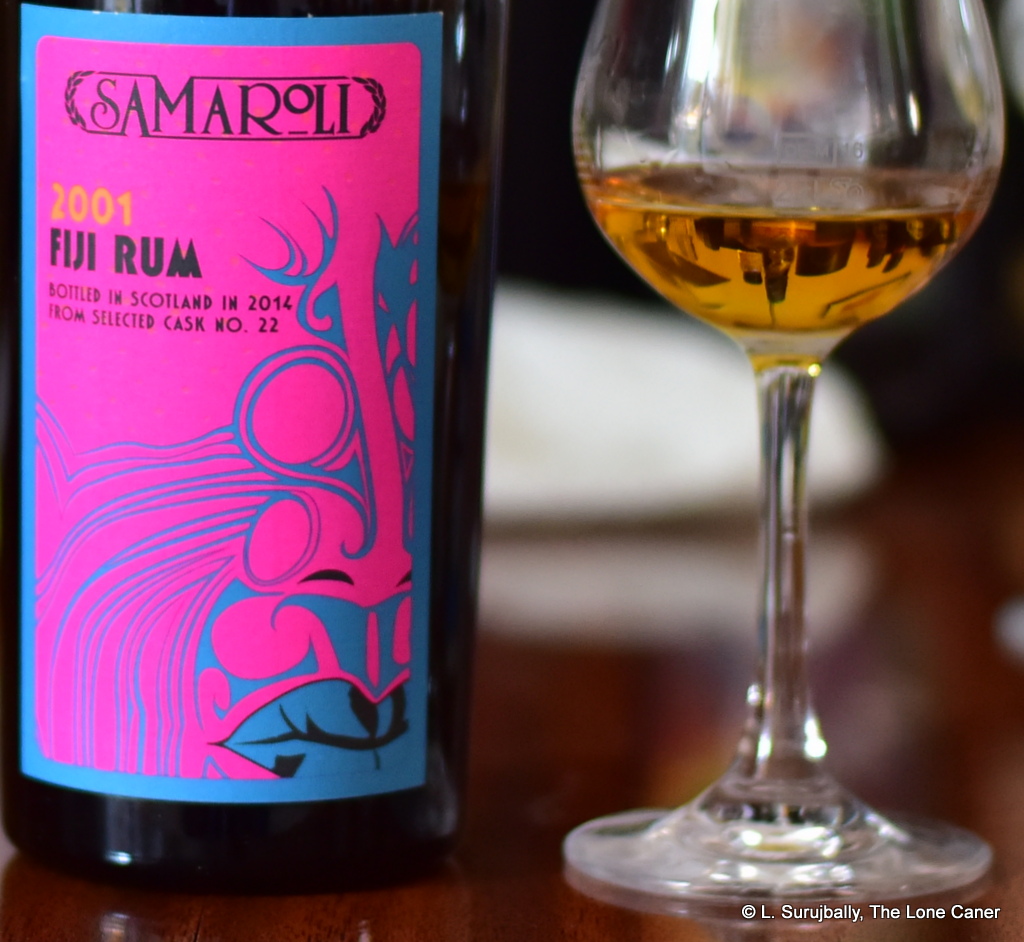
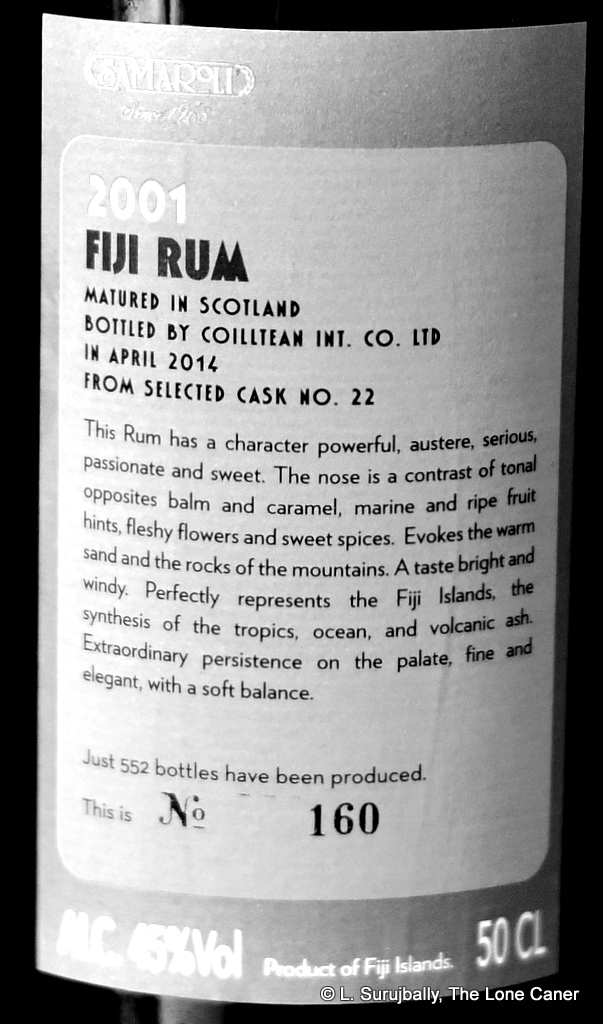

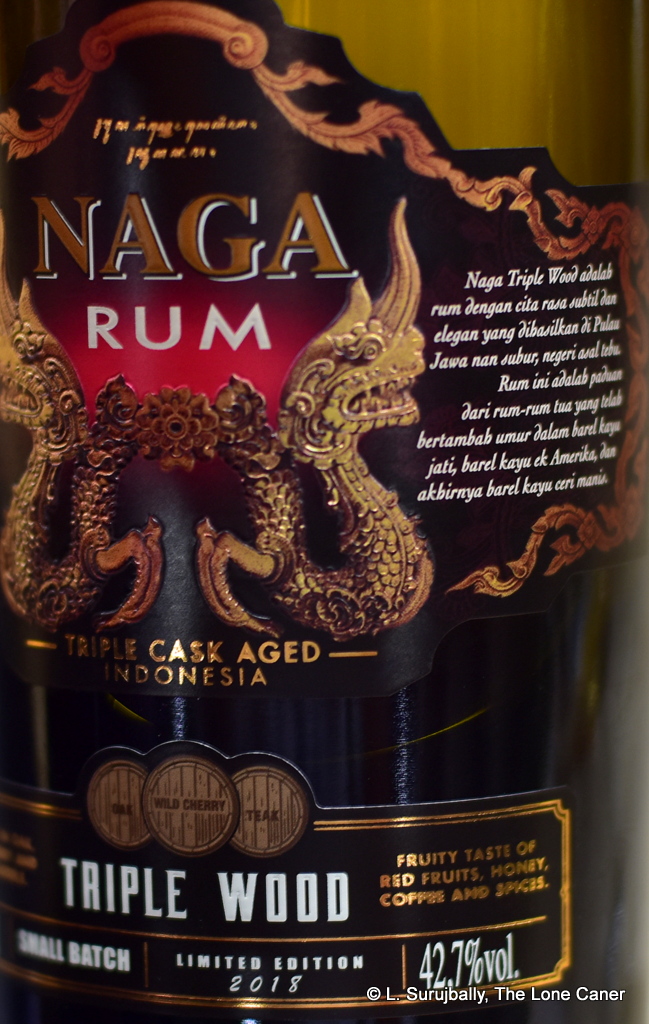 Does this multiple wood ageing result in anything worth drinking? Yes it does – the extra year seems to have had an interesting and salutary effect on the profile – though at 42.7% it remains as easy and soft as its siblings. The nose, for example, is a nice step up: cardboard, musty paper, some dunder of spoiled bananas skins, plus strawberries and soft pineapple or two and brine (which, I swear, made me think of Hawaiian pizza). Caramel and bitter dark chocolate round things off. It’s a relatively easy sniff, inoffensive yet solid.
Does this multiple wood ageing result in anything worth drinking? Yes it does – the extra year seems to have had an interesting and salutary effect on the profile – though at 42.7% it remains as easy and soft as its siblings. The nose, for example, is a nice step up: cardboard, musty paper, some dunder of spoiled bananas skins, plus strawberries and soft pineapple or two and brine (which, I swear, made me think of Hawaiian pizza). Caramel and bitter dark chocolate round things off. It’s a relatively easy sniff, inoffensive yet solid.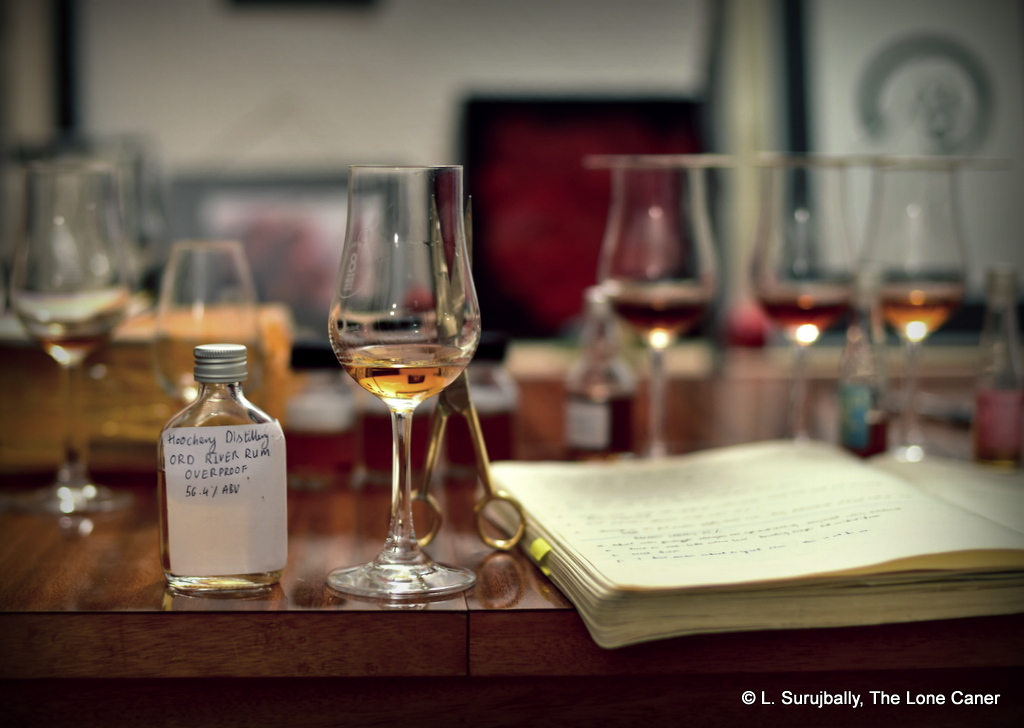
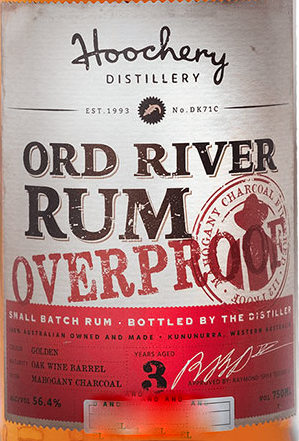 The nose begins with metallic, ashy notes right away, damp cardboard in a long-abandoned, leaky musty house. Thankfully this peculiar aroma doesn’t hang around, but morphs into a sort of soya-salt veggie soup vibe, which in turn gets muskier and sweeter over time; it releases notes of bananas and molasses and syrup, before gradually lightening and becoming – surprisingly enough – rather crisp. White fruits emerge – unripe pears and guavas, green apples, gooseberries, grapes. What’s really surprising is the way this all transforms over a period of ten minutes or so from one nasal profile to another. It’s not usual, but it is noteworthy.
The nose begins with metallic, ashy notes right away, damp cardboard in a long-abandoned, leaky musty house. Thankfully this peculiar aroma doesn’t hang around, but morphs into a sort of soya-salt veggie soup vibe, which in turn gets muskier and sweeter over time; it releases notes of bananas and molasses and syrup, before gradually lightening and becoming – surprisingly enough – rather crisp. White fruits emerge – unripe pears and guavas, green apples, gooseberries, grapes. What’s really surprising is the way this all transforms over a period of ten minutes or so from one nasal profile to another. It’s not usual, but it is noteworthy.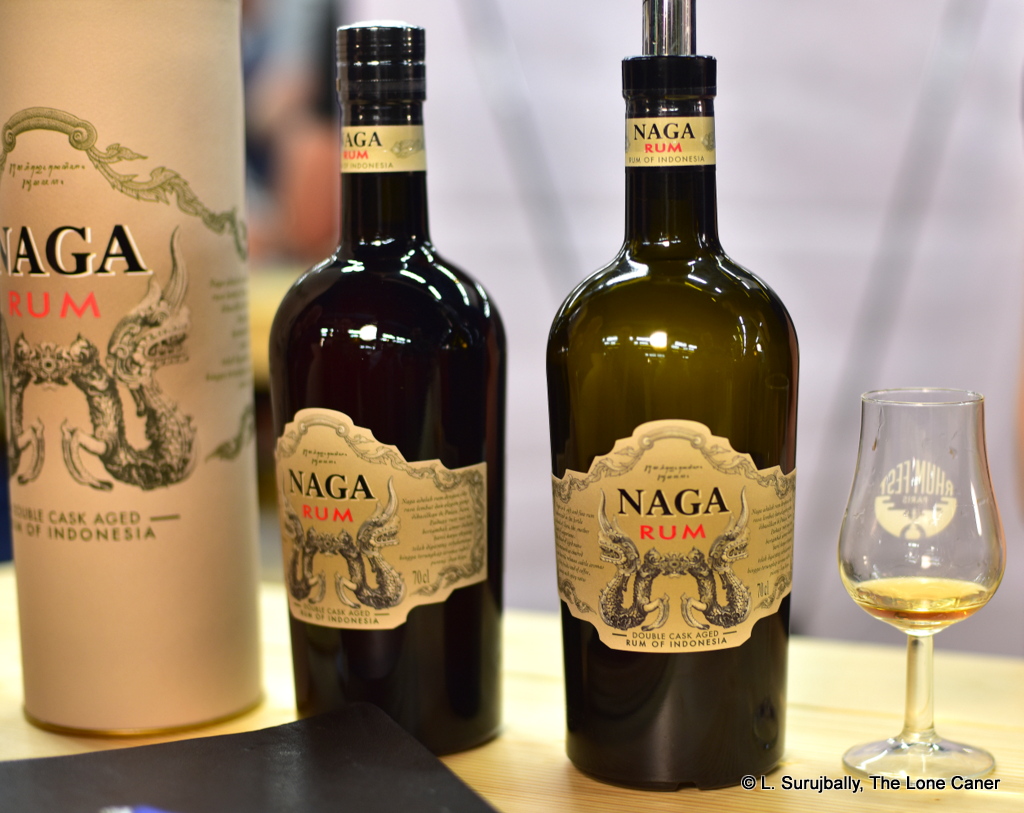
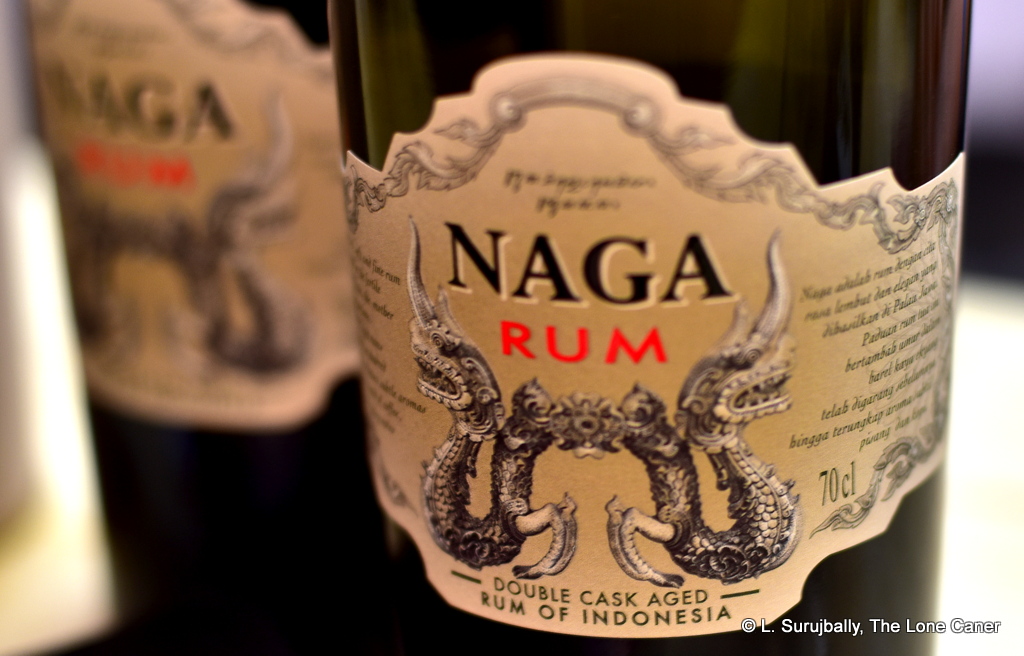 This process provides a tasting profile that reminds me of nothing so much than a slightly addled wooden still-rum from El Dorado: it’s sweet, feels the slightest bit sticky, and has strong notes of dark fruits, red licorice, plums, raisins and an almond chocolate bar gone soft in the heat. There’s other stuff in there as well – some caramel, vanilla, pepper again, light orange peel, but overall the whole thing is not particularly complex, and it ambles easily towards a short and gentle finish of no particular distinction that pretty much displays some dark fruit, caramel, anise and molasses, and that’s about it.
This process provides a tasting profile that reminds me of nothing so much than a slightly addled wooden still-rum from El Dorado: it’s sweet, feels the slightest bit sticky, and has strong notes of dark fruits, red licorice, plums, raisins and an almond chocolate bar gone soft in the heat. There’s other stuff in there as well – some caramel, vanilla, pepper again, light orange peel, but overall the whole thing is not particularly complex, and it ambles easily towards a short and gentle finish of no particular distinction that pretty much displays some dark fruit, caramel, anise and molasses, and that’s about it.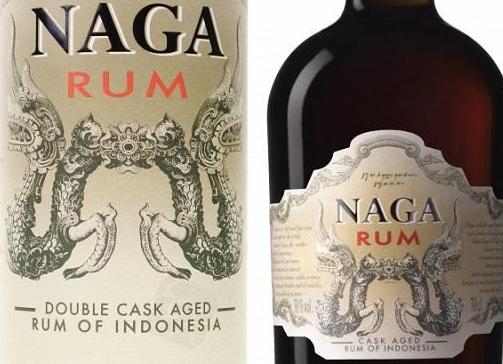 So, until we know more, focus on the rum itself. It’s quiet and gentle and some cask strength lovers might say – not without justification – that it’s insipid. It has some good tastes, simple but okay, and hews to a profile with which we’re not entirely unfamiliar. It has a few off notes and a peculiar substrate of something different, which is a good thing. So in the end,
So, until we know more, focus on the rum itself. It’s quiet and gentle and some cask strength lovers might say – not without justification – that it’s insipid. It has some good tastes, simple but okay, and hews to a profile with which we’re not entirely unfamiliar. It has a few off notes and a peculiar substrate of something different, which is a good thing. So in the end, 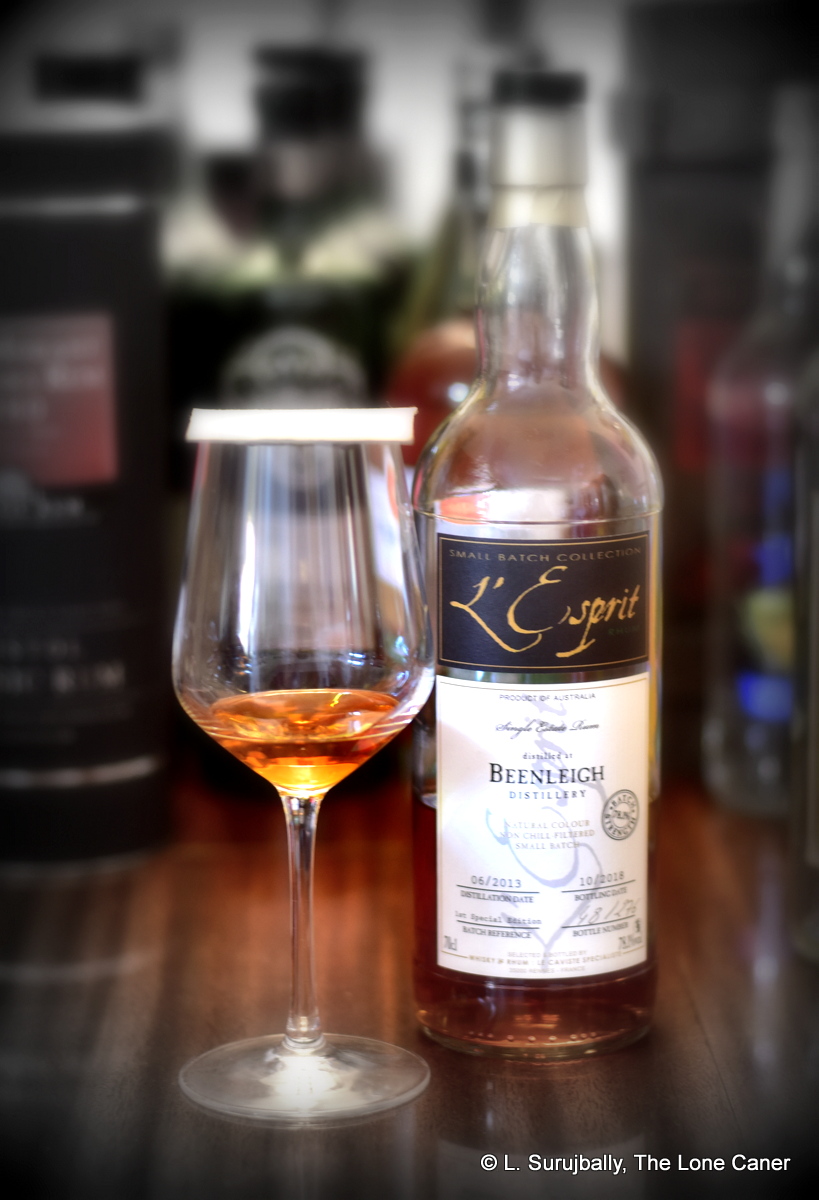 The French-bottled, Australian-distilled Beenleigh 5 Year Old Rum is a screamer of a rum, a rum that wasn’t just released in 2018, but unleashed. Like a mad roller coaster, it careneed madly up and down and from side to side, breaking every rule and always seeming just about to go off the rails of taste before managing to stay on course, providing, at end, an experience that was shattering — if not precisely outstanding.
The French-bottled, Australian-distilled Beenleigh 5 Year Old Rum is a screamer of a rum, a rum that wasn’t just released in 2018, but unleashed. Like a mad roller coaster, it careneed madly up and down and from side to side, breaking every rule and always seeming just about to go off the rails of taste before managing to stay on course, providing, at end, an experience that was shattering — if not precisely outstanding.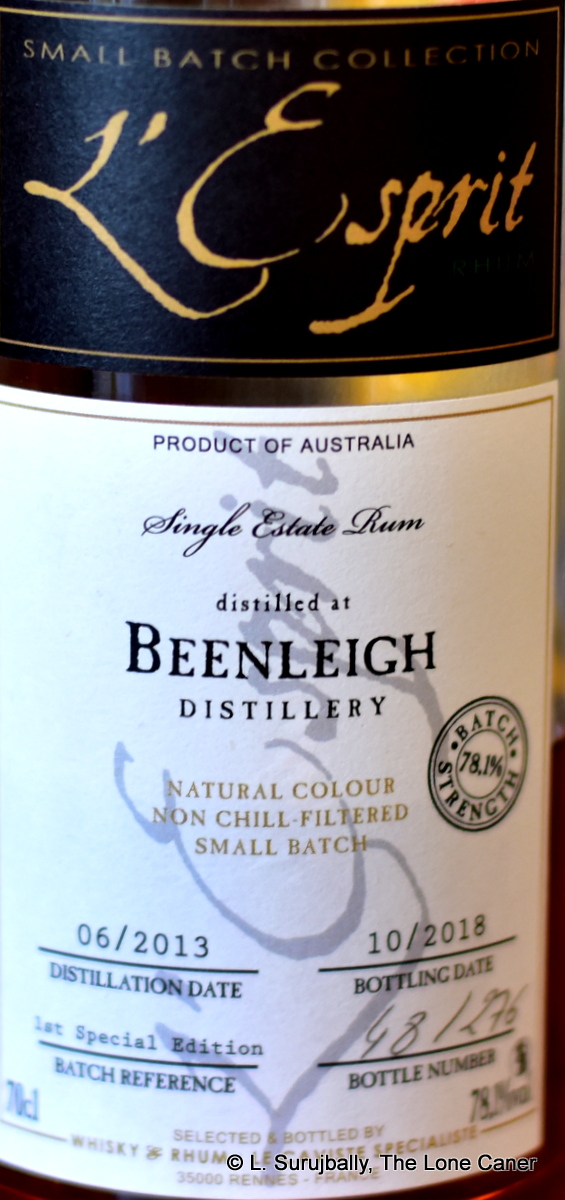 I still remember how unusual the
I still remember how unusual the 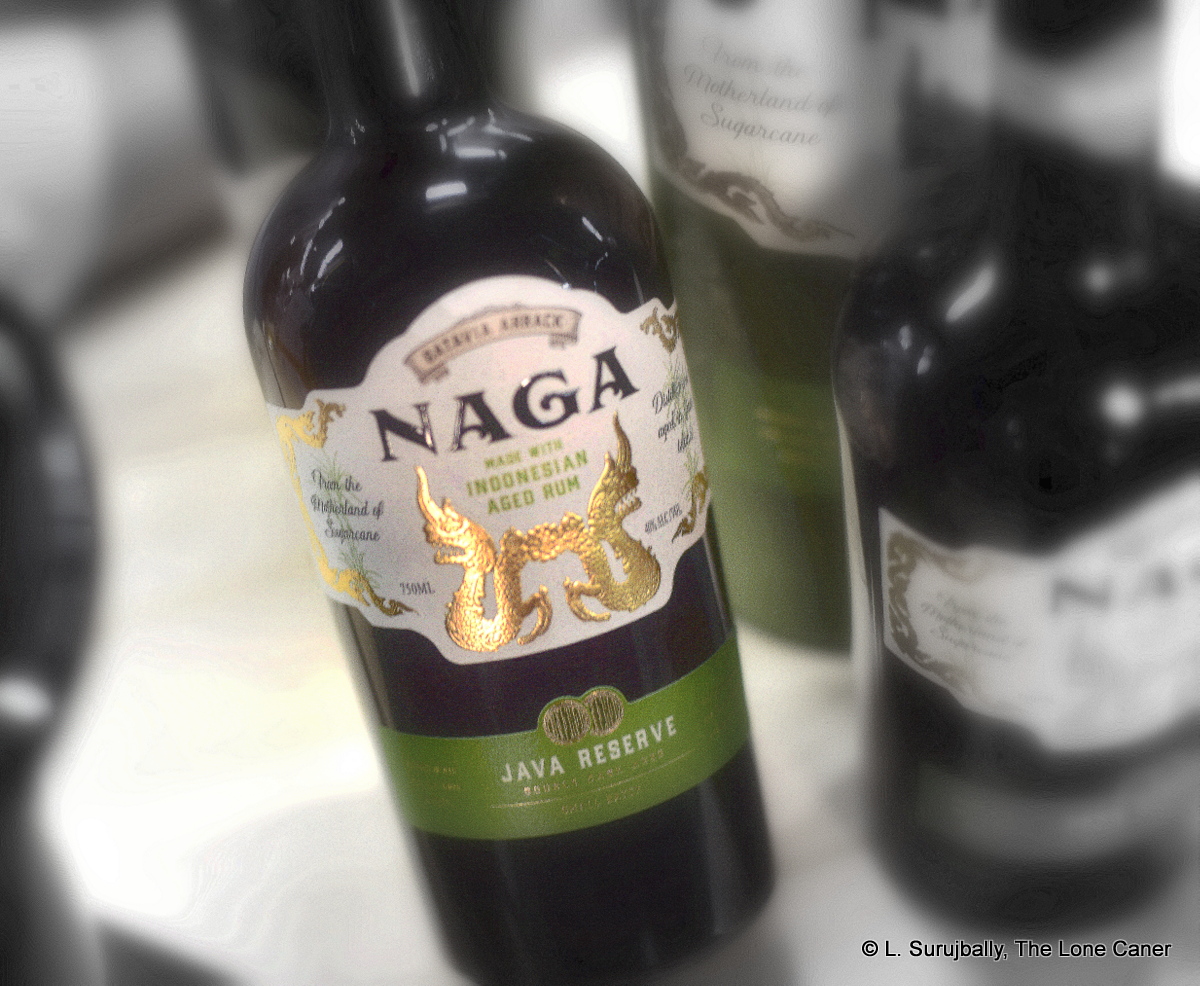
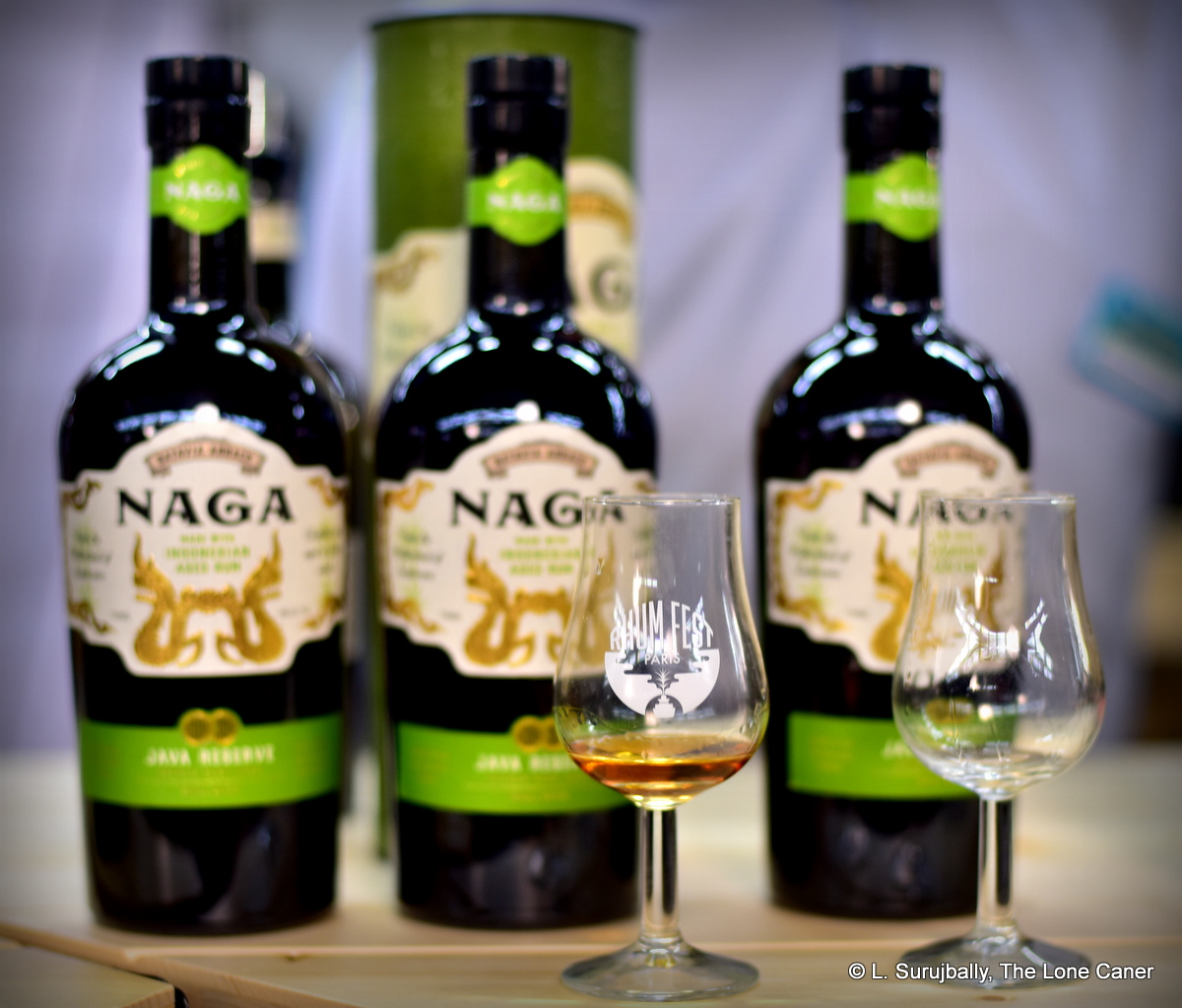
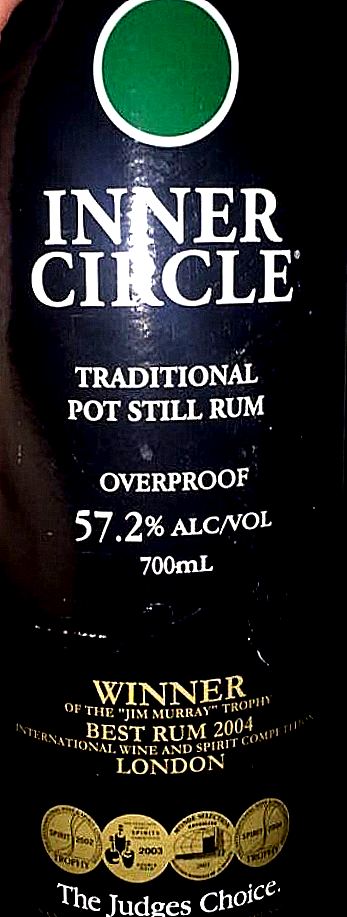 Rumaniacs Review # 096 | 0617
Rumaniacs Review # 096 | 0617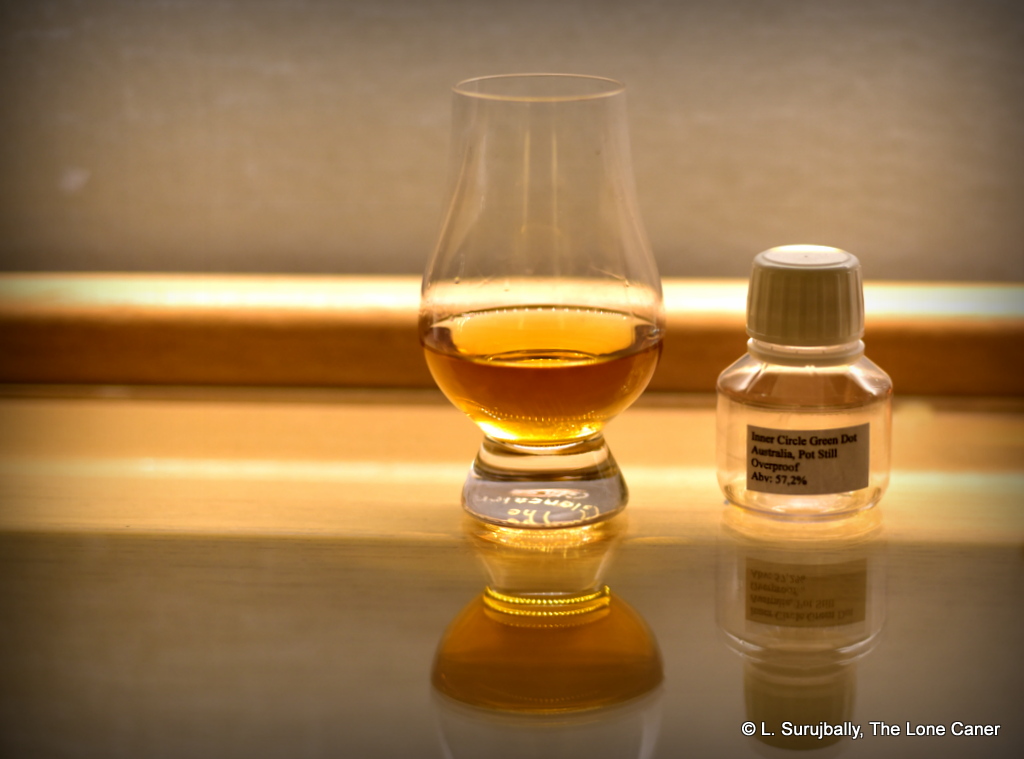
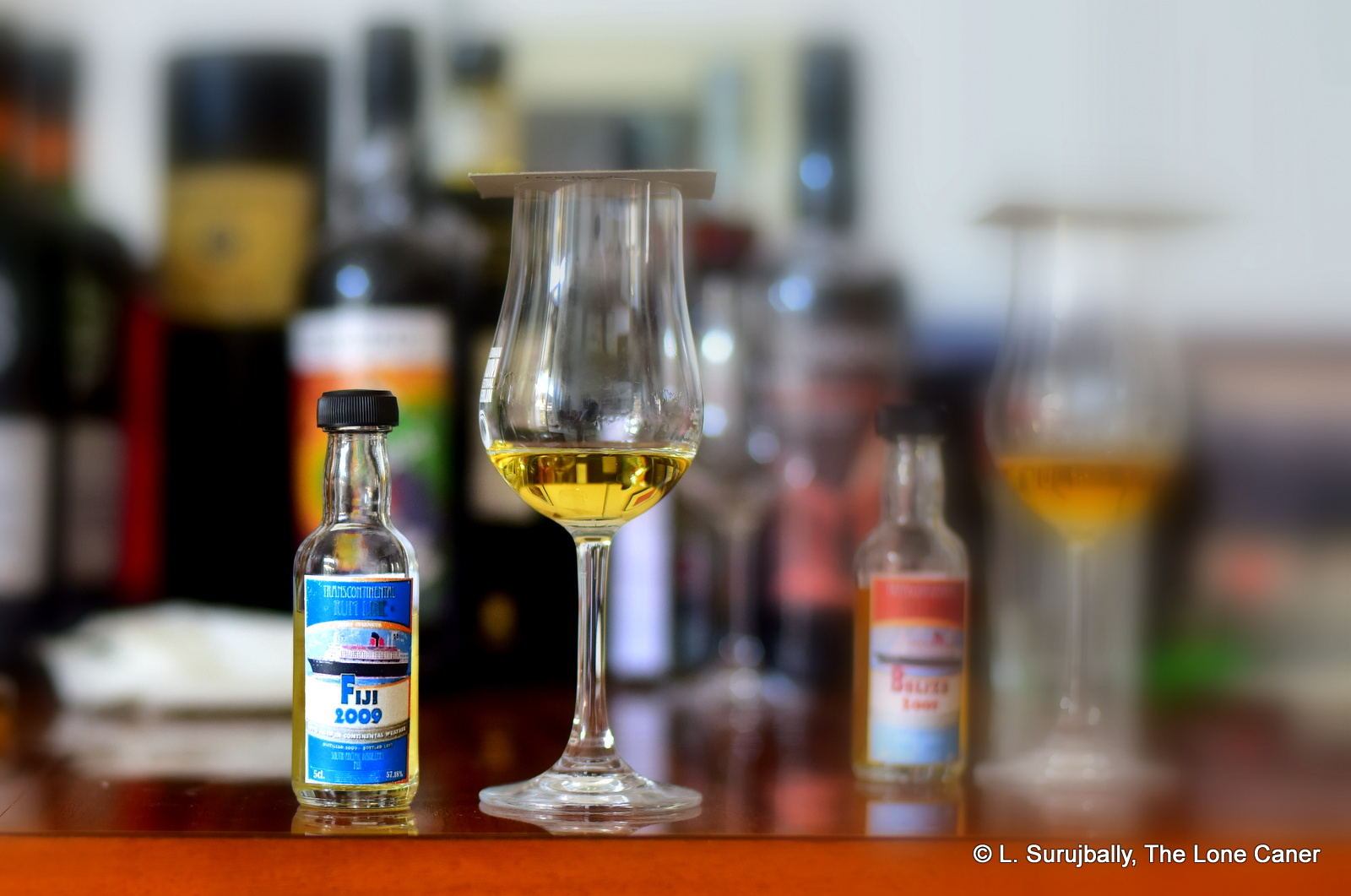
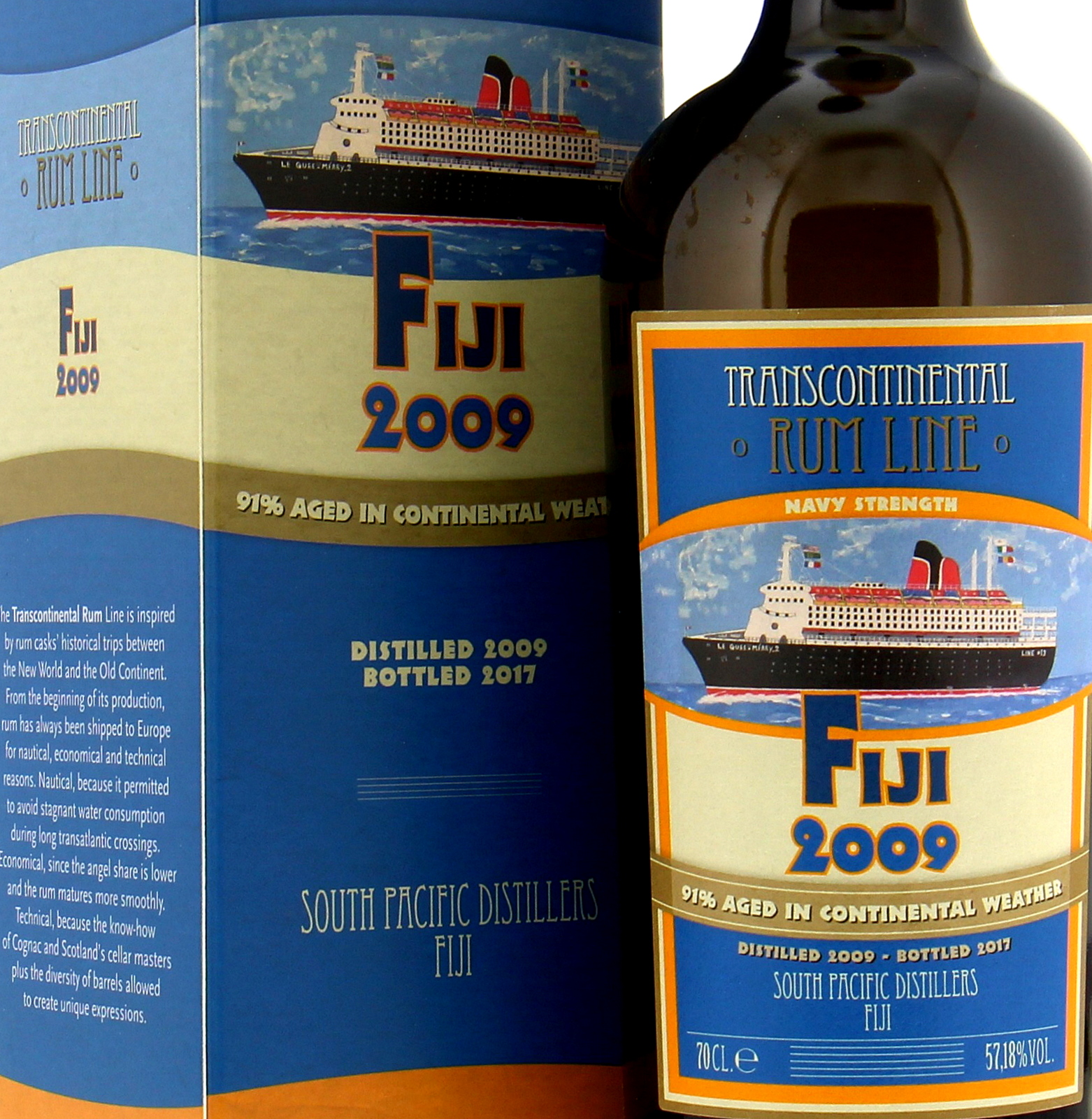 That said, the still which produced this pale yellow 57.19% ABV rum remains an open question, though my personal belief is that it’s a column still product. It certainly noses that way – aside from presenting as a fierce little young rum, it lacks something of the depth and pungency of a pot still spirit. However, that doesn’t matter, because it’s damn fine on its own merits – brine, olives, paint, turpentine, acetones, fresh nail polish, more brine and gherkins, and that’s just the beginning. It has aspects that are almost Jamaican, what with a bunch of prancing dancing esters jostling for attention, except that the smell is not so crisply sweet. It develops very nicely into smoke, leather, linseed oil for cricket bats, more brine and oily smoothness. Like a set of seething rapids finished with the messing around, it settles down to a much more refined state after half an hour or so.
That said, the still which produced this pale yellow 57.19% ABV rum remains an open question, though my personal belief is that it’s a column still product. It certainly noses that way – aside from presenting as a fierce little young rum, it lacks something of the depth and pungency of a pot still spirit. However, that doesn’t matter, because it’s damn fine on its own merits – brine, olives, paint, turpentine, acetones, fresh nail polish, more brine and gherkins, and that’s just the beginning. It has aspects that are almost Jamaican, what with a bunch of prancing dancing esters jostling for attention, except that the smell is not so crisply sweet. It develops very nicely into smoke, leather, linseed oil for cricket bats, more brine and oily smoothness. Like a set of seething rapids finished with the messing around, it settles down to a much more refined state after half an hour or so.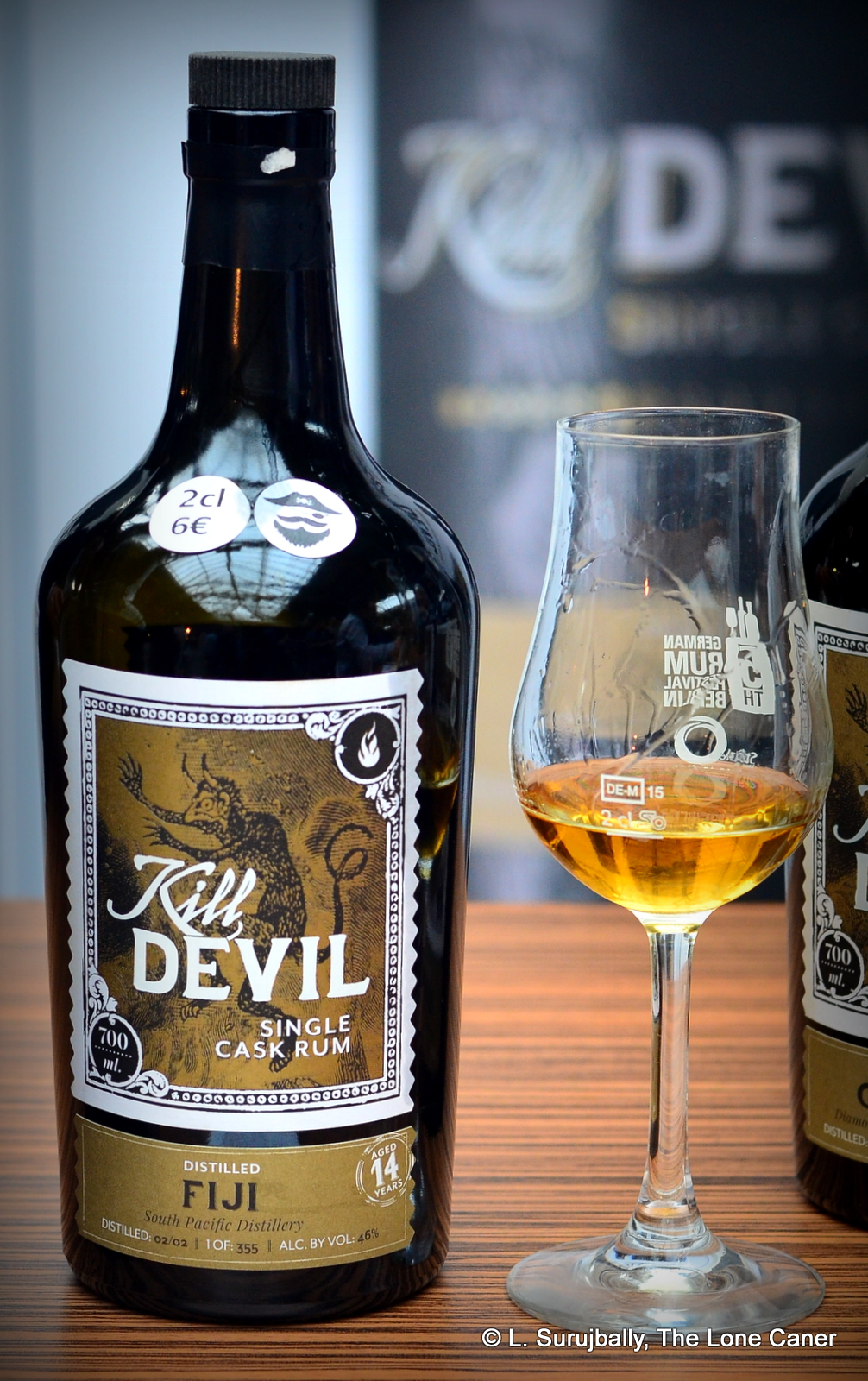 Kill Devil is the rum brand of the whiskey blender Hunter Laing, who’ve been around since 1949 when Frederick Laing founded a whisky blending company in Glasgow. In 2013 the company created an umbrella organization called Hunter Laing & Co, into which they folded all their various companies (like Edition Spirits and the Premier Bonding bottling company). The first rums they released to the market – with all the now-standard provisos like being unadulterated, unfiltered and 46% – arrived for consumers in 2016, which meant that this rum from the South Pacific Distillery on Fiji, was issued as part of their first batch (oddly, their own website provides no listing of their rums at all aside from boilerplate blurbs). When the time came for me to decide what to sample, the
Kill Devil is the rum brand of the whiskey blender Hunter Laing, who’ve been around since 1949 when Frederick Laing founded a whisky blending company in Glasgow. In 2013 the company created an umbrella organization called Hunter Laing & Co, into which they folded all their various companies (like Edition Spirits and the Premier Bonding bottling company). The first rums they released to the market – with all the now-standard provisos like being unadulterated, unfiltered and 46% – arrived for consumers in 2016, which meant that this rum from the South Pacific Distillery on Fiji, was issued as part of their first batch (oddly, their own website provides no listing of their rums at all aside from boilerplate blurbs). When the time came for me to decide what to sample, the 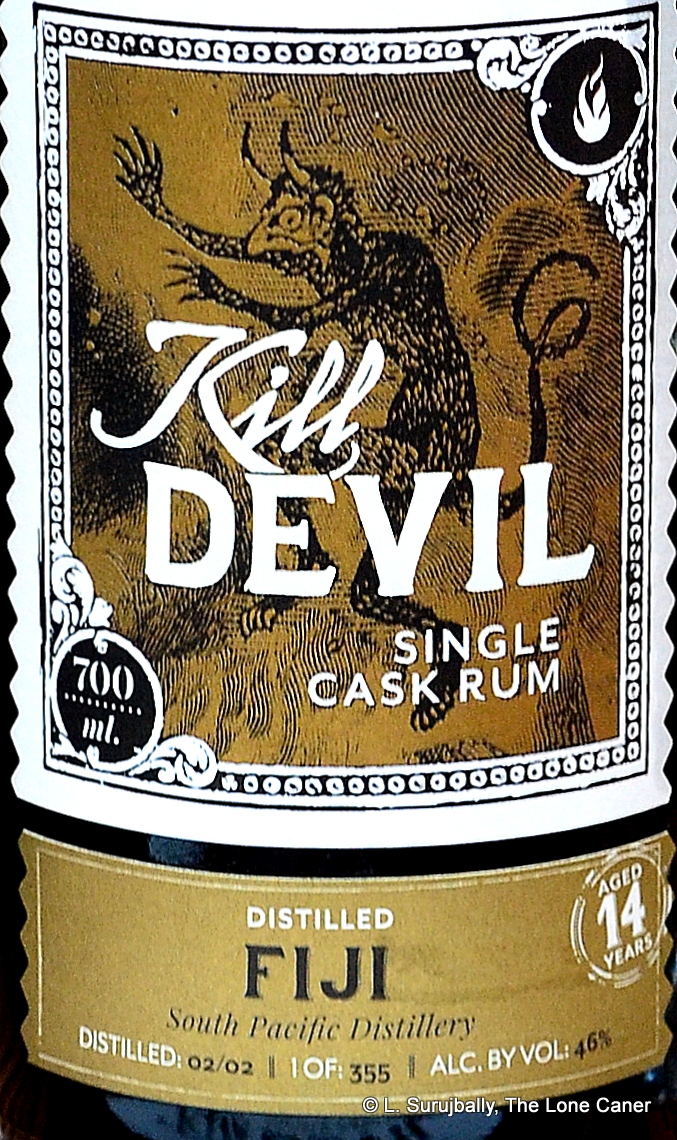 On the palate the fruits started to take over, tart and a unripe, like ginnips and soursop together with ripe mangoes, pineapple and cherries in syrup right out of a can – there was hardly any of the brininess from the nose carrying over, and as it developed, additional hints of pears, watermelon, honey, and pickled gherkins were clearly noticeable. It was warm and crisp at the same time, quite nice, and while the long and heated finish added nothing new to the whole experience, it didn’t lose any of the flavours either; and I was left thinking that while different from other Fijians for sure, it seemed to be channelling a sly note of Jamaican funk throughout, and that was far from unpleasant….though perhaps a bit at odds with the whole profile.
On the palate the fruits started to take over, tart and a unripe, like ginnips and soursop together with ripe mangoes, pineapple and cherries in syrup right out of a can – there was hardly any of the brininess from the nose carrying over, and as it developed, additional hints of pears, watermelon, honey, and pickled gherkins were clearly noticeable. It was warm and crisp at the same time, quite nice, and while the long and heated finish added nothing new to the whole experience, it didn’t lose any of the flavours either; and I was left thinking that while different from other Fijians for sure, it seemed to be channelling a sly note of Jamaican funk throughout, and that was far from unpleasant….though perhaps a bit at odds with the whole profile.